SNVS119D March 1998 – May 2016 LM2597 , LM2597HV
PRODUCTION DATA.
- 1 Features
- 2 Applications
- 3 Description
- 4 Revision History
- 5 Description (continued)
- 6 Pin Configuration and Functions
-
7 Specifications
- 7.1 Absolute Maximum Ratings
- 7.2 ESD Ratings
- 7.3 Recommended Operating Conditions
- 7.4 Thermal Information
- 7.5 Electrical Characteristics - 3.3 V
- 7.6 Electrical Characteristics - 5 V
- 7.7 Electrical Characteristics - 12 V
- 7.8 Electrical Characteristics - Adjustable
- 7.9 Electrical Characteristics - All Output Voltage Versions
- 7.10 Typical Characteristics
- 8 Detailed Description
- 9 Application and Implementation
- 10Power Supply Recommendations
- 11Layout
- 12Device and Documentation Support
- 13Mechanical, Packaging, and Orderable Information
Package Options
Mechanical Data (Package|Pins)
Thermal pad, mechanical data (Package|Pins)
Orderable Information
7 Specifications
7.1 Absolute Maximum Ratings (1)(2)
| MIN | MAX | UNIT | |||
|---|---|---|---|---|---|
| Maximum supply voltage, VIN(3) | LM2597 | 45 | V | ||
| LM2597HV | 60 | V | |||
| SD/SS pin input voltage(4) | 6 | V | |||
| Delay pin voltage(4) | 1.5 | V | |||
| Flag pin voltage | –0.3 | 45 | V | ||
| Bias supply voltage, VBS | –0.3 | 30 | V | ||
| Feedback pin voltage | –0.3 | 25 | V | ||
| Output voltage to ground (steady-state) | –1 | 1 | V | ||
| Power dissipation | Internally limited | ||||
| Lead temperature | D package | Vapor phase (60 sec) | 215 | °C | |
| Infrared (15 sec) | 220 | ||||
| P package (soldering, 10 sec) | 260 | ||||
| Maximum junction temperature | 150 | °C | |||
| Storage temperature, Tstg | –65 | 150 | °C | ||
(1) Stresses beyond those listed under Absolute Maximum Ratings may cause permanent damage to the device. These are stress ratings only, which do not imply functional operation of the device at these or any other conditions beyond those indicated under Recommended Operating Conditions. Exposure to absolute-maximum-rated conditions for extended periods may affect device reliability.
(2) If Military/Aerospace specified devices are required, please contact the Texas Instruments Sales Office/ Distributors for availability and specifications.
(3) VIN = 40V for the LM2597 and 60V for the LM2597HV.
(4) Voltage internally clamped. If clamp voltage is exceeded, limit current to a maximum of 1 mA.
7.2 ESD Ratings
| VALUE | UNIT | |||
|---|---|---|---|---|
| V(ESD) | Electrostatic discharge | Human-body model (HBM), per ANSI/ESDA/JEDEC JS-001(1)(2) | ±2000 | V |
(1) JEDEC document JEP155 states that 500-V HBM allows safe manufacturing with a standard ESD control process.
(2) The human body model is a 100 pF capacitor discharged through a 1.5k resistor into each pin.
7.3 Recommended Operating Conditions
| MIN | MAX | UNIT | ||
|---|---|---|---|---|
| Supply voltage | LM2597 | 4.5 | 40 | V |
| LM2597HV | 4.5 | 60 | V | |
| Temperature | –40 | 125 | °C | |
7.4 Thermal Information
| THERMAL METRIC(1) | LM2597, LM2597HV | UNIT | ||
|---|---|---|---|---|
| D (SOIC) | P (PDIP) | |||
| 8 PINS | 8 PINS | |||
| RθJA | Junction-to-ambient thermal resistance(2) | 95 | 150 | °C/W |
(1) For more information about traditional and new thermal metrics, see the Semiconductor and IC Package Thermal Metrics application report, SPRA953.
(2) Junction-to-ambient thermal resistance with approximately 1 square inch of printed circuit board copper surrounding the leads. Additional copper area will lower thermal resistance further.
7.5 Electrical Characteristics – 3.3 V
Specifications are for TJ = 25°C, VINmax = 40 V for the LM2597, and 60 V for the LM2597HV (unless otherwise noted).| PARAMETER | TEST CONDITIONS | MIN(1) | TYP (2) | MAX(1) | UNIT | ||
|---|---|---|---|---|---|---|---|
| SYSTEM PARAMETERS(3)(4) (See Figure 46 for test circuit) | |||||||
| VOUT | Output voltage | 4.75 V ≤ VIN ≤ VINmax, 0.1 A ≤ ILOAD ≤ 0.5 A |
TJ = 25°C | 3.168 | 3.3 | 3.432 | V |
| Over full operating temperature range | 3.135 | 3.465 | |||||
| η | Efficiency | VIN = 12 V, ILOAD = 0.5 A | 80% | ||||
(1) All room temperature limits are 100% production tested. All limits at temperature extremes are specified via correlation using standard Statistical Quality Control (SQC) methods. All limits are used to calculate Average Outgoing Quality Level (AOQL).
(2) Typical numbers are at 25°C and represent the most likely norm.
(3) External components such as the catch diode, inductor, input and output capacitors can affect switching regulator system performance. When the LM2597xx is used as shown in the Figure 46 test circuit, system performance is shown in the test conditions column.
(4) No diode, inductor or capacitor connected to output pin.
7.6 Electrical Characteristics – 5 V
Specifications are for TJ = 25°C, VINmax = 40 V for the LM2597, and 60 V for the LM2597HV (unless otherwise noted).| PARAMETER | TEST CONDITIONS | MIN(1) | TYP(2) | MAX(1) | UNIT | ||
|---|---|---|---|---|---|---|---|
| SYSTEM PARAMETERS(3)(4) (See Figure 46 for test circuit) | |||||||
| VOUT | Output voltage | 7 V ≤ VIN ≤ VINmax, 0.1 A ≤ ILOAD ≤ 0.5 A |
TJ = 25°C | 4.8 | 5 | 5.2 | V |
| Over full operating temperature range | 4.75 | 5.25 | |||||
| η | Efficiency | VIN = 12 V, ILOAD = 0.5 A | 82% | ||||
(1) All room temperature limits are 100% production tested. All limits at temperature extremes are specified via correlation using standard Statistical Quality Control (SQC) methods. All limits are used to calculate Average Outgoing Quality Level (AOQL).
(2) Typical numbers are at 25°C and represent the most likely norm.
(3) External components such as the catch diode, inductor, input and output capacitors can affect switching regulator system performance. When the LM2597xx is used as shown in the Figure 46 test circuit, system performance is shown in the test conditions column.
(4) No diode, inductor or capacitor connected to output pin.
7.7 Electrical Characteristics – 12 V
Specifications are for TJ = 25°C, VINmax = 40 V for the LM2597, and 60 V for the LM2597HV (unless otherwise noted).| PARAMETER | TEST CONDITIONS | MIN(1) | TYP(2) | MAX(1) | UNIT | ||
|---|---|---|---|---|---|---|---|
| SYSTEM PARAMETERS(3)(4) (See Figure 46 for test circuit) | |||||||
| VOUT | Output voltage | 15 V ≤ VIN ≤ VINmax, 0.1 A ≤ ILOAD ≤ 0.5 A |
TJ = 25°C | 11.52 | 12 | 12.48 | V |
| Over full operating temperature range | 11.4 | 12.6 | |||||
| η | Efficiency | VIN = 25 V, ILOAD = 0.5 A | 88% | ||||
(1) All room temperature limits are 100% production tested. All limits at temperature extremes are specified via correlation using standard Statistical Quality Control (SQC) methods. All limits are used to calculate Average Outgoing Quality Level (AOQL).
(2) Typical numbers are at 25°C and represent the most likely norm.
(3) External components such as the catch diode, inductor, input and output capacitors can affect switching regulator system performance. When the LM2597xx is used as shown in the Figure 46 test circuit, system performance is shown in the test conditions column.
(4) No diode, inductor or capacitor connected to output pin.
7.8 Electrical Characteristics – Adjustable
Specifications are for TJ = 25°C, VINmax = 40 V for the LM2597, and 60 V for the LM2597HV (unless otherwise noted).| PARAMETER | TEST CONDITIONS | MIN(1) | TYP(2) | MAX(1) | UNIT | ||
|---|---|---|---|---|---|---|---|
| SYSTEM PARAMETERS(3)(4) (See Figure 46 for test circuit) | |||||||
| VFB | Feedback voltage | 4.5 V ≤ VIN ≤ VINmax, 0.1 A ≤ ILOAD ≤ 0.5 A | 1.230 | V | |||
| VOUT programmed for 3 V, circuit of Figure 46 |
TJ = 25°C | 1.193 | 1.267 | ||||
| Over full operating temperature range | 1.18 | 1.280 | |||||
| η | Efficiency | VIN = 12 V, VOUT = 3 V, ILOAD = 0.5 A | 80% | ||||
(1) All room temperature limits are 100% production tested. All limits at temperature extremes are specified via correlation using standard Statistical Quality Control (SQC) methods. All limits are used to calculate Average Outgoing Quality Level (AOQL).
(2) Typical numbers are at 25°C and represent the most likely norm.
(3) External components such as the catch diode, inductor, input and output capacitors can affect switching regulator system performance. When the LM2597xx is used as shown in the Figure 46 test circuit, system performance is shown in the test conditions column.
(4) No diode, inductor or capacitor connected to output pin.
7.9 Electrical Characteristics – All Output Voltage Versions
Specifications are for TJ = 25°C, ILOAD = 100 mA, VIN = 12 V for the 3.3-V, 5-V, and Adjustable version, and VIN = 24 V for the 12-V version (unless otherwise noted).| PARAMETER | TEST CONDITIONS | MIN(1) | TYP(2) | MAX(1) | UNIT | ||
|---|---|---|---|---|---|---|---|
| DEVICE PARAMETERS | |||||||
| Ib | Feedback bias current | Adjustable version only, VFB = 1.235 V | TJ = 25°C | 10 | 50 | nA | |
| Over full operating temperature range | 100 | ||||||
| fO | Oscillator frequency(3) | TJ = 25°C | 127 | 150 | 173 | kHz | |
| Over full operating temperature range | 110 | 173 | |||||
| VSAT | Saturation voltage | IOUT = 0.5 A(4)(5) | TJ = 25°C | 0.9 | 1.1 | V | |
| Over full operating temperature range | 1.2 | ||||||
| DC | Max duty cycle (ON)(5) | 100% | |||||
| Min duty cycle (OFF)(6) | 0% | ||||||
| ICL | Current limit | Peak current(4)(5) | TJ = 25°C | 0.65 | 0.8 | 1.3 | A |
| Over full operating temperature range | 0.58 | 1.4 | |||||
| IL | Output leakage current | Output = 0 V(4)(6)(7) | 50 | μA | |||
| Output = −1 V | 2 | 15 | mA | ||||
| IQ | Operating quiescent current |
SD/SS pin open, VBS pin open(6) | 5 | 10 | mA | ||
| ISTBY | Standby quiescent current |
LM2597, SD/SS pin = 0 V(6) | TJ = 25°C | 85 | 200 | μA | |
| Over full operating temperature range | 250 | ||||||
| LM2597HV | TJ = 25°C | 140 | 250 | μA | |||
| Over full operating temperature range | 300 | ||||||
| SHUTDOWN/SOFT-START CONTROL (see Figure 46 for test circuit) | |||||||
| VSD | Shutdown threshold voltage |
1.3 | V | ||||
| Low, shutdown mode, over full operating temperature range | 0.6 | ||||||
| High, soft-start mode | 2 | ||||||
| VSS | Soft-start voltage | VOUT = 20% of nominal output voltage | 2 | V | |||
| VOUT = 100% of nominal output voltage | 3 | ||||||
| ISD | Shutdown current | VSHUTDOWN = 0.5 V | 5 | 10 | μA | ||
| ISS | Soft-start current | VSoft-start = 2.5 V | 1.6 | 5 | μA | ||
| FLAG/DELAY CONTROL (see Figure 46 for test circuit) | |||||||
| Regulator dropout detector threshold voltage |
Low (Flag ON) | 92% | 96% | 98% | |||
| VFSAT | Flag output saturation voltage |
ISINK = 3 mA | 0.3 | V | |||
| VDELAY = 0.5 V | TJ = 25°C | 0.7 | V | ||||
| Over full operating temperature range | 1 | ||||||
| IFL | Flag output leakage current |
VFLAG = 40 V | 0.3 | μA | |||
| Delay pin threshold voltage |
1.25 | V | |||||
| Low (flag ON) | 1.21 | V | |||||
| High (flag OFF) and VOUT regulated | 1.29 | V | |||||
| Delay pin source current |
VDELAY = 0.5 V | 3 | 6 | μA | |||
| Delay pin saturation | Low (Flag ON) | TJ = 25°C | 55 | 350 | mV | ||
| Over full operating temperature range | 400 | ||||||
| BIAS SUPPLY | |||||||
| IBS | Bias supply pin current | VBS = 2 V(6) | 120 | 400 | μA | ||
| VBS = 4.4 V(6) | 4 | 10 | mA | ||||
| IQ | Operating quiescent current | VBS = 4.4 V , Vin pin current(6) | 1 | 2 | mA | ||
(1) All room temperature limits are 100% production tested. All limits at temperature extremes are specified via correlation using standard Statistical Quality Control (SQC) methods. All limits are used to calculate Average Outgoing Quality Level (AOQL).
(2) Typical numbers are at 25°C and represent the most likely norm.
(3) The switching frequency is reduced when the second stage current limit is activated. The amount of reduction is determined by the severity of current overload.
(4) No diode, inductor or capacitor connected to output pin.
(5) Feedback pin removed from output and connected to 0 V to force the output transistor switch ON.
(6) Feedback pin removed from output and connected to 12 V for the 3.3-V, 5-V, and the adjustable version, and 15 V for the 12-V version, to force the output transistor switch OFF.
(7) VIN = 40 V for the LM2597 and 60 V for the LM2597HV.
7.10 Typical Characteristics
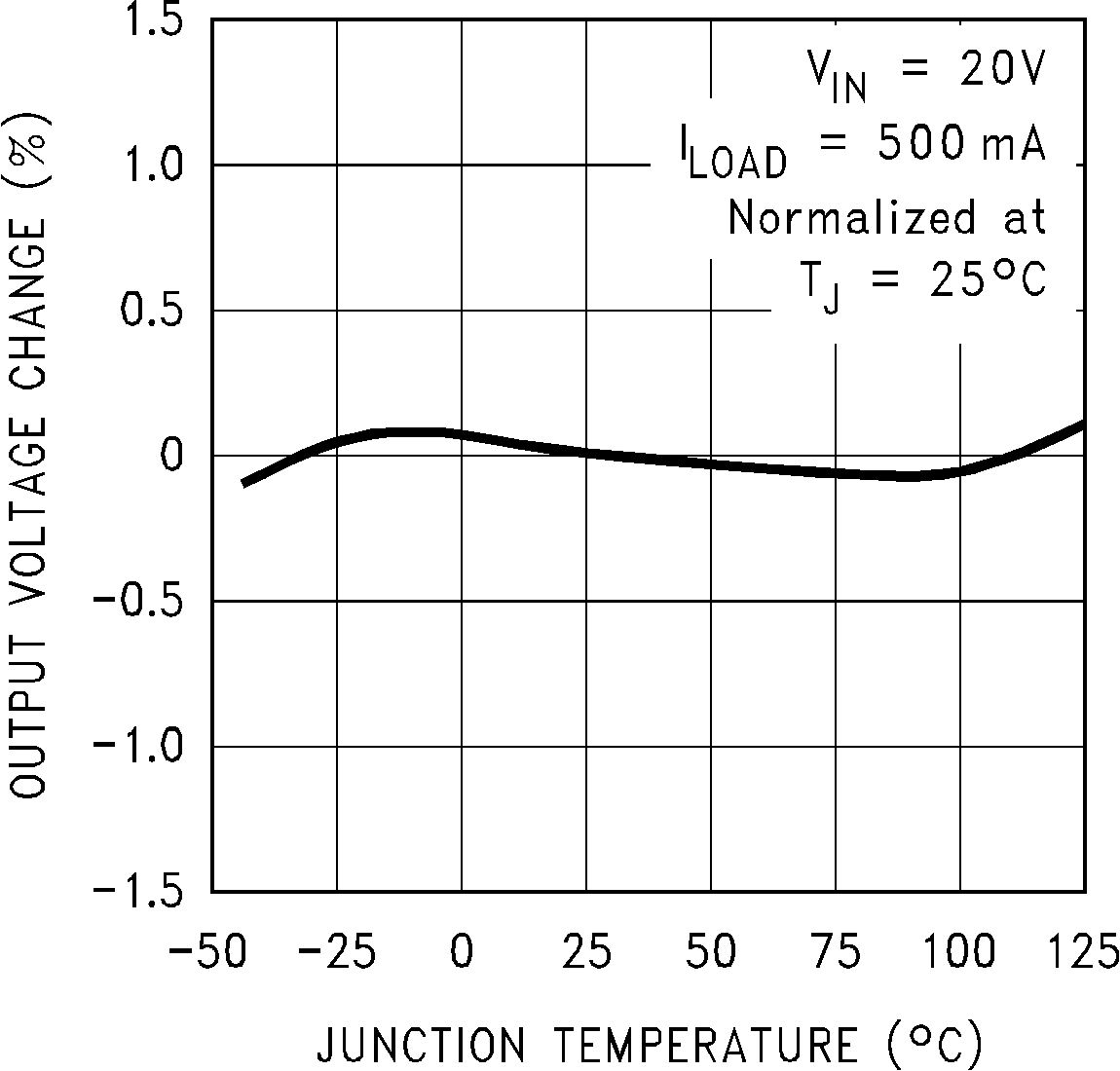 Figure 1. Normalized Output Voltage
Figure 1. Normalized Output Voltage
 Figure 3. Efficiency
Figure 3. Efficiency
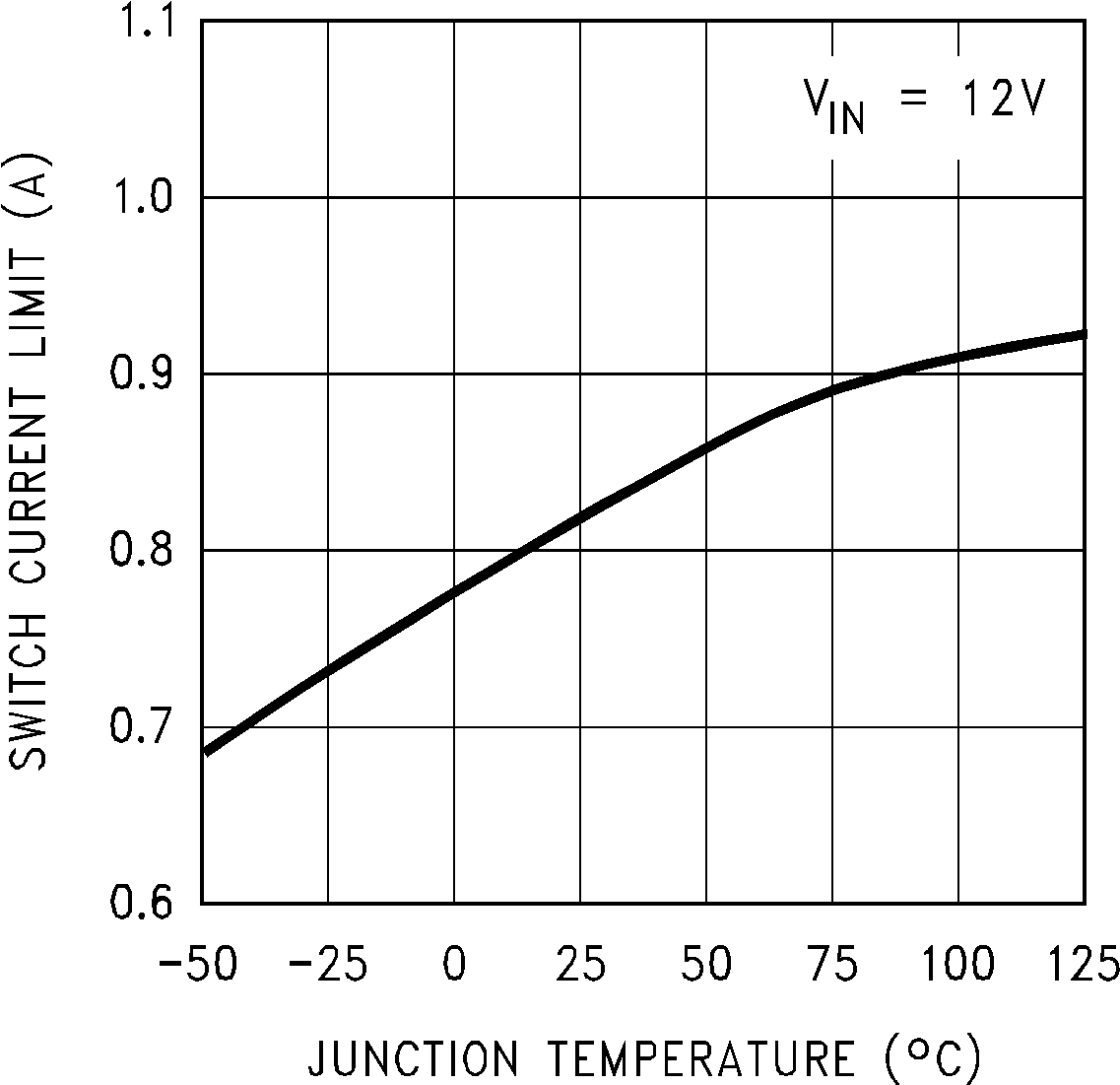 Figure 5. Switch Current Limit
Figure 5. Switch Current Limit
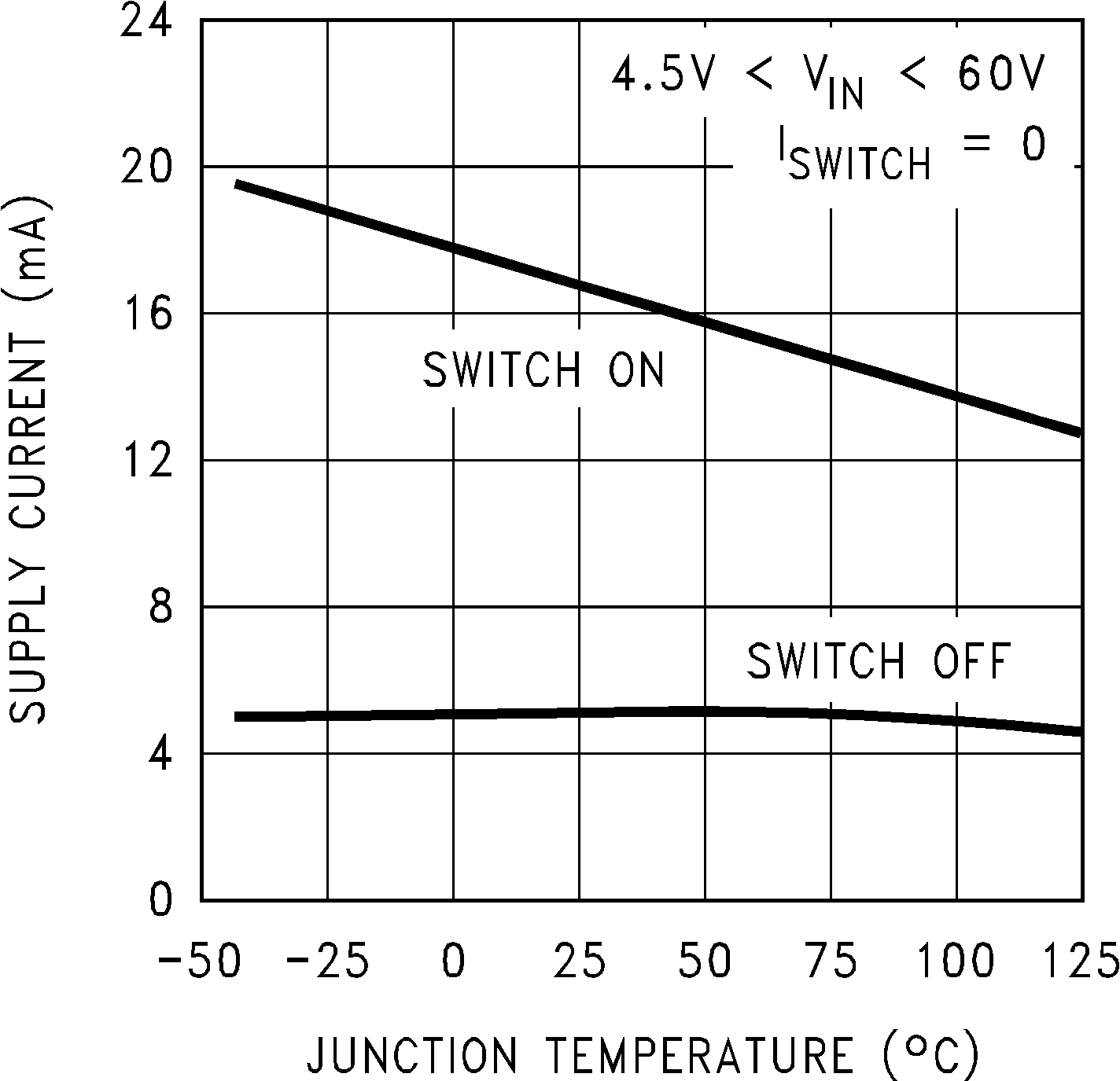 Figure 7. Quiescent Current
Figure 7. Quiescent Current
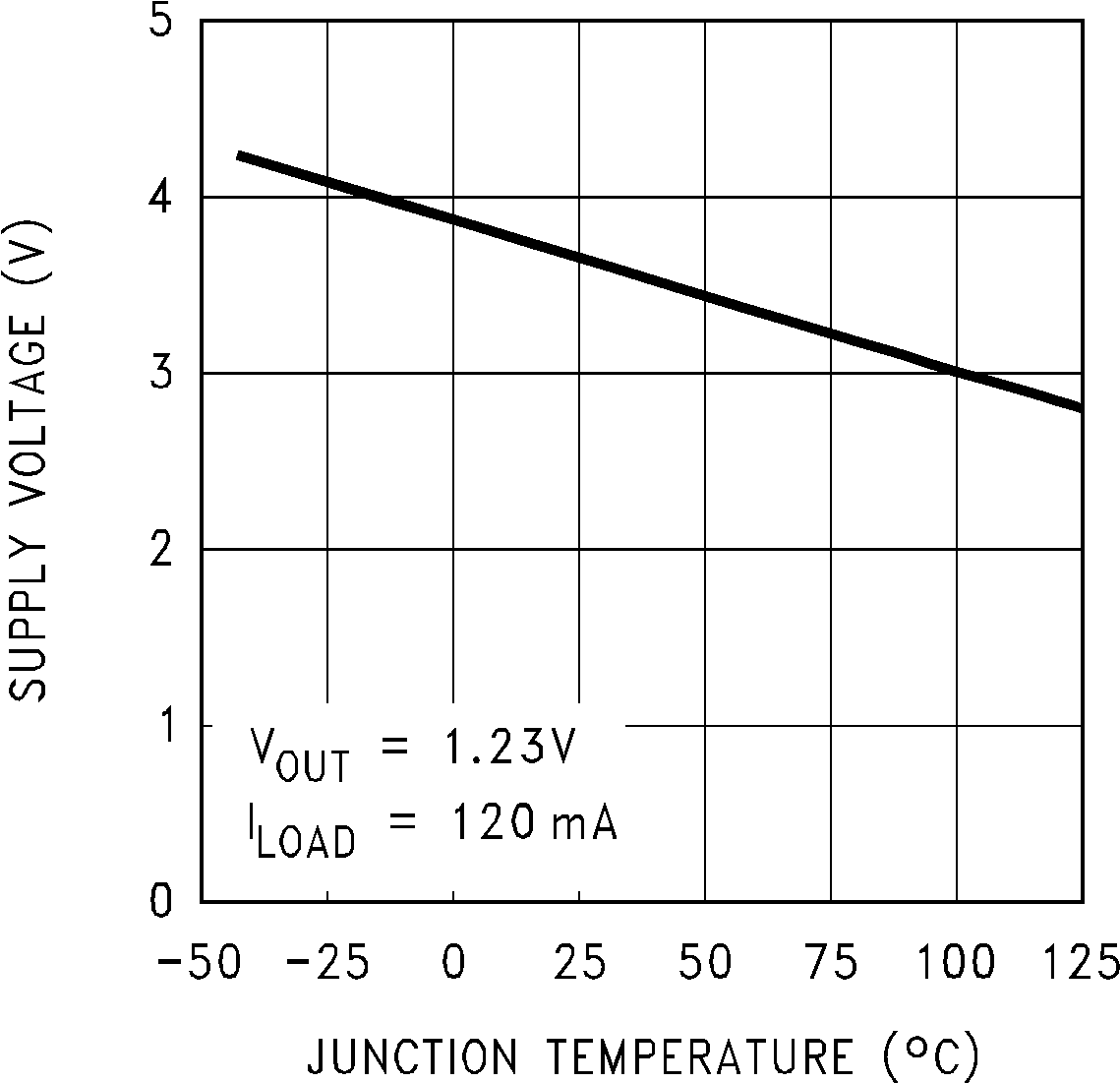 Figure 9. Minimum Operating Supply Voltage
Figure 9. Minimum Operating Supply Voltage
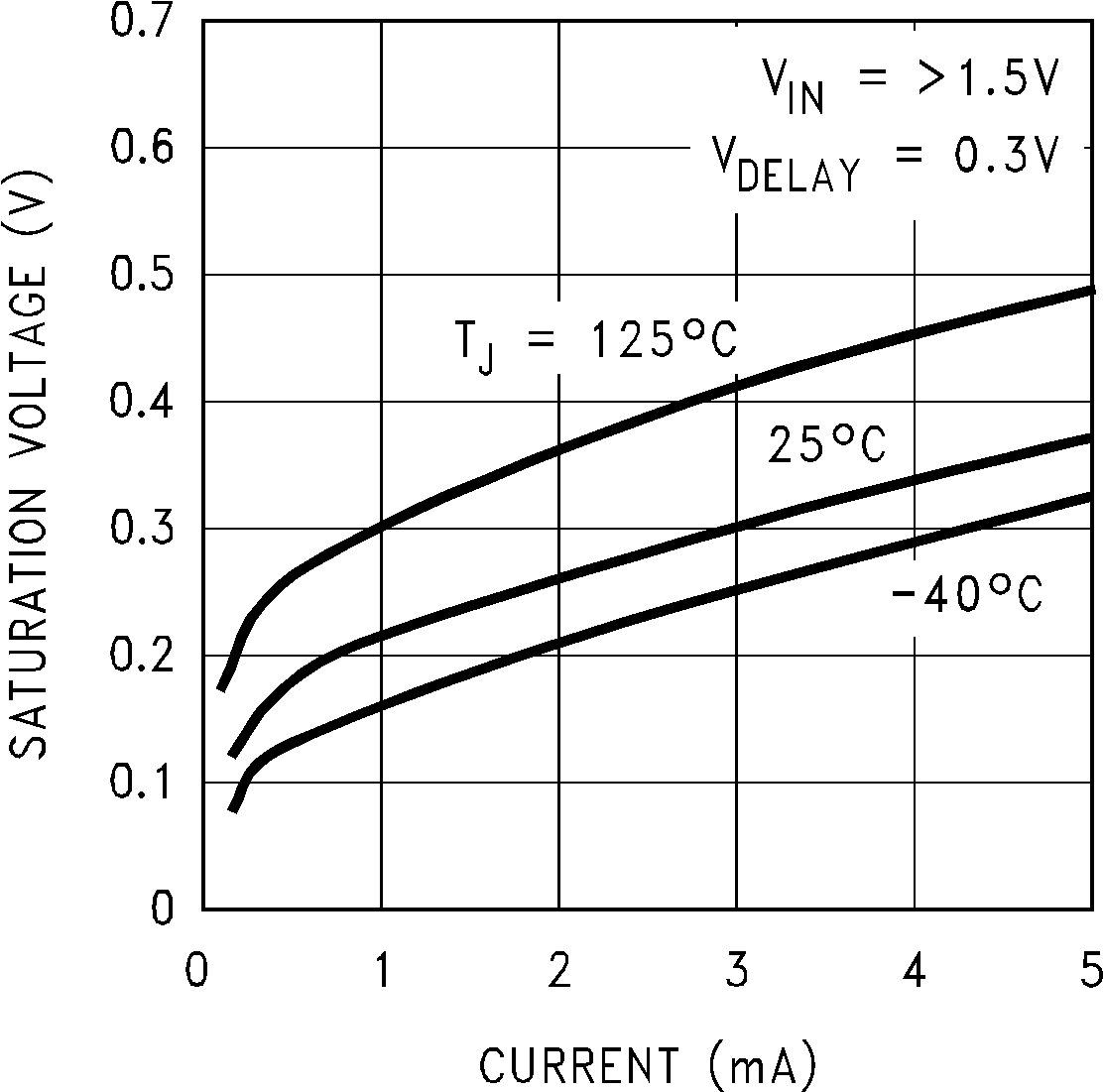 Figure 11. Flag Saturation Voltage
Figure 11. Flag Saturation Voltage
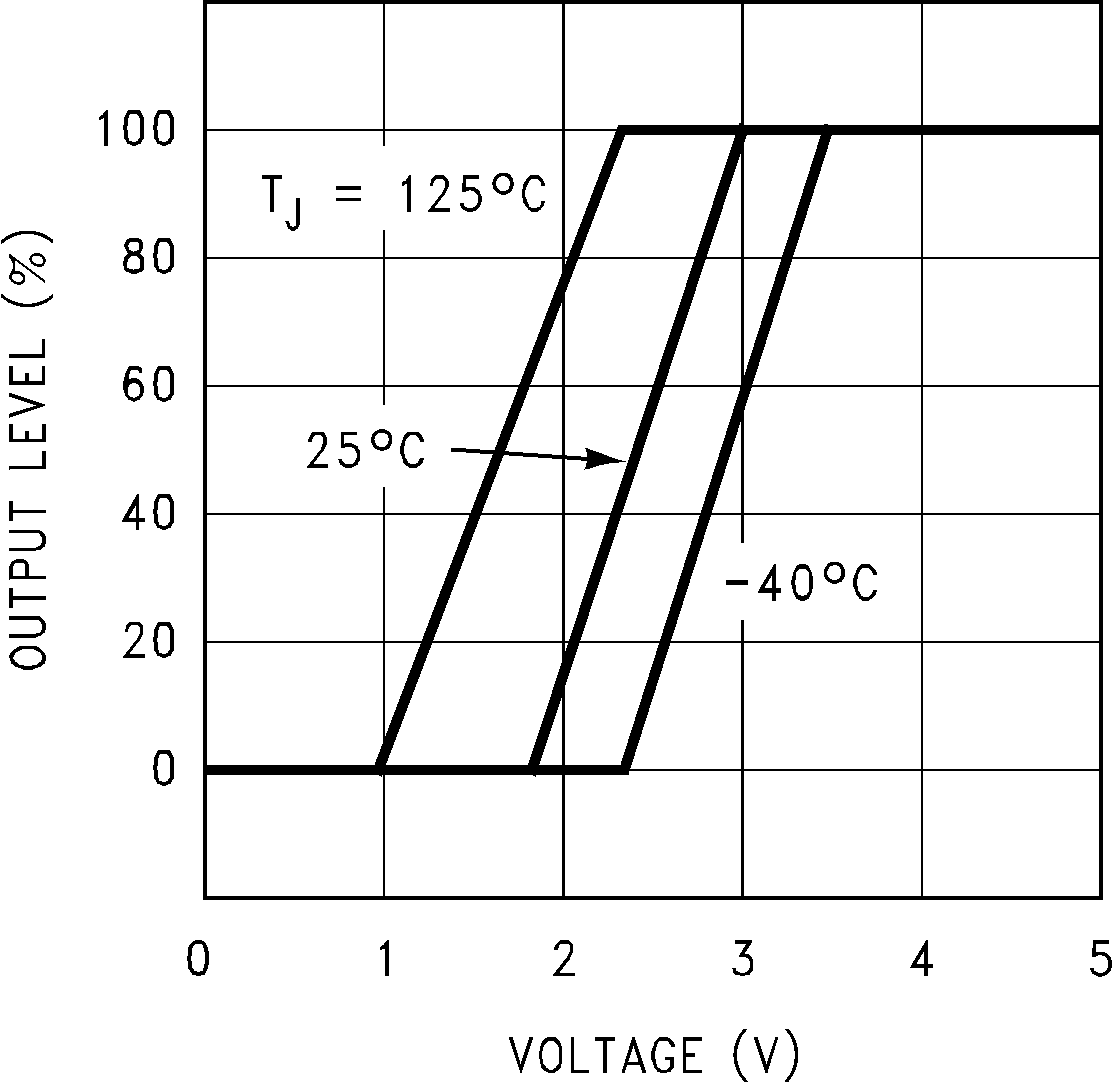 Figure 13. Soft-Start
Figure 13. Soft-Start
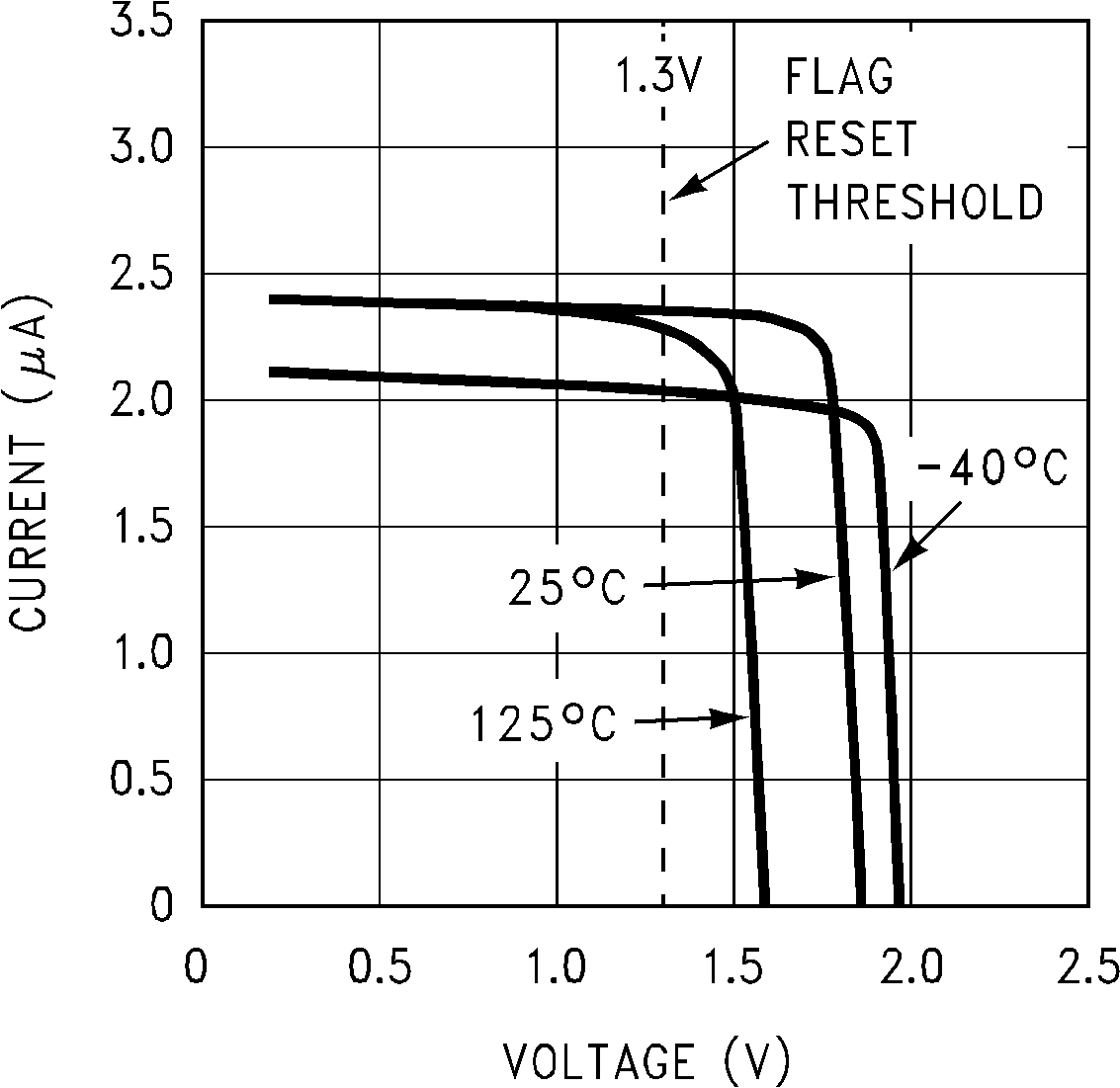 Figure 15. Delay Pin Current
Figure 15. Delay Pin Current
 Figure 17. Soft-Start Response
Figure 17. Soft-Start Response
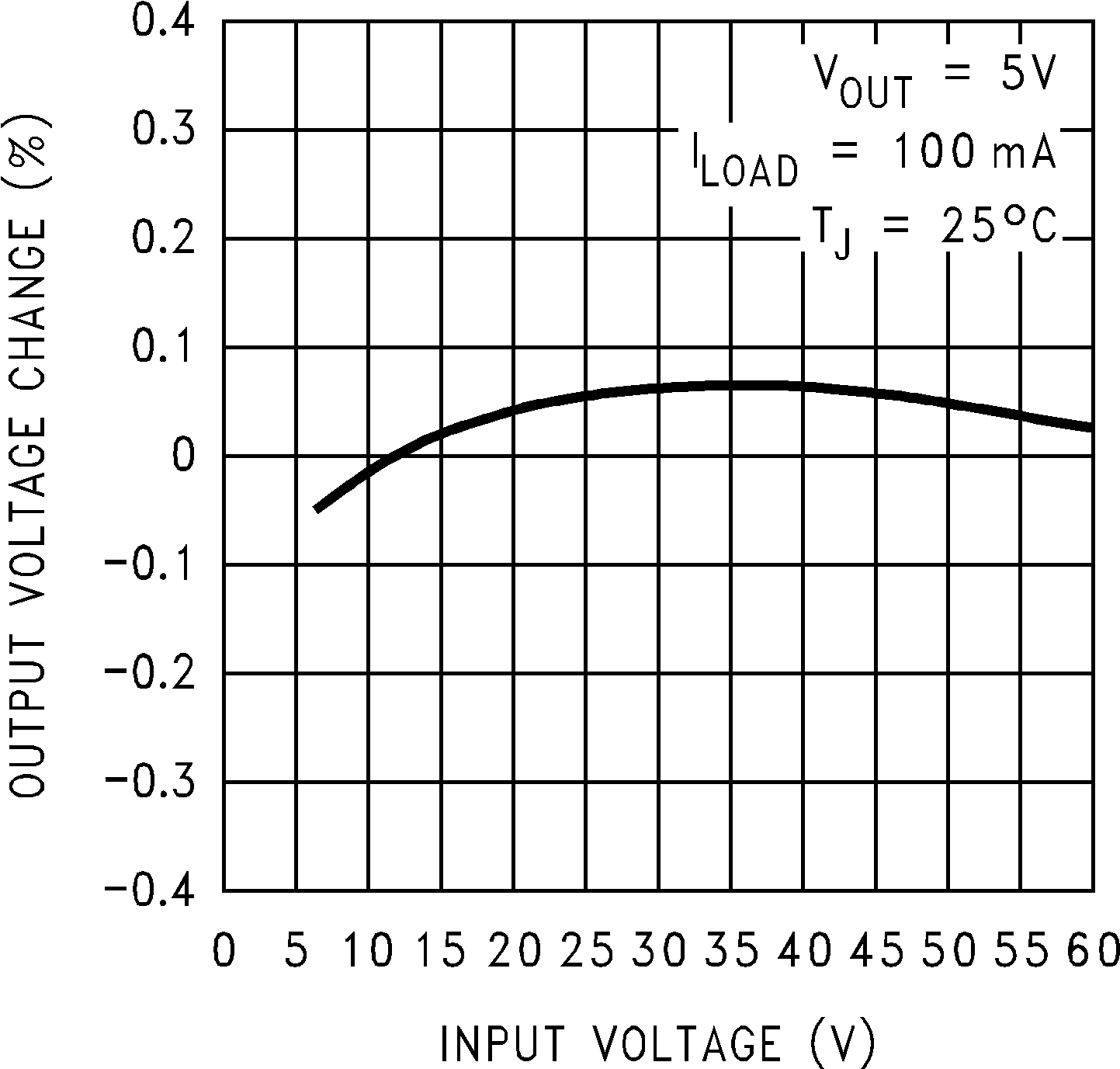 Figure 2. Line Regulation
Figure 2. Line Regulation
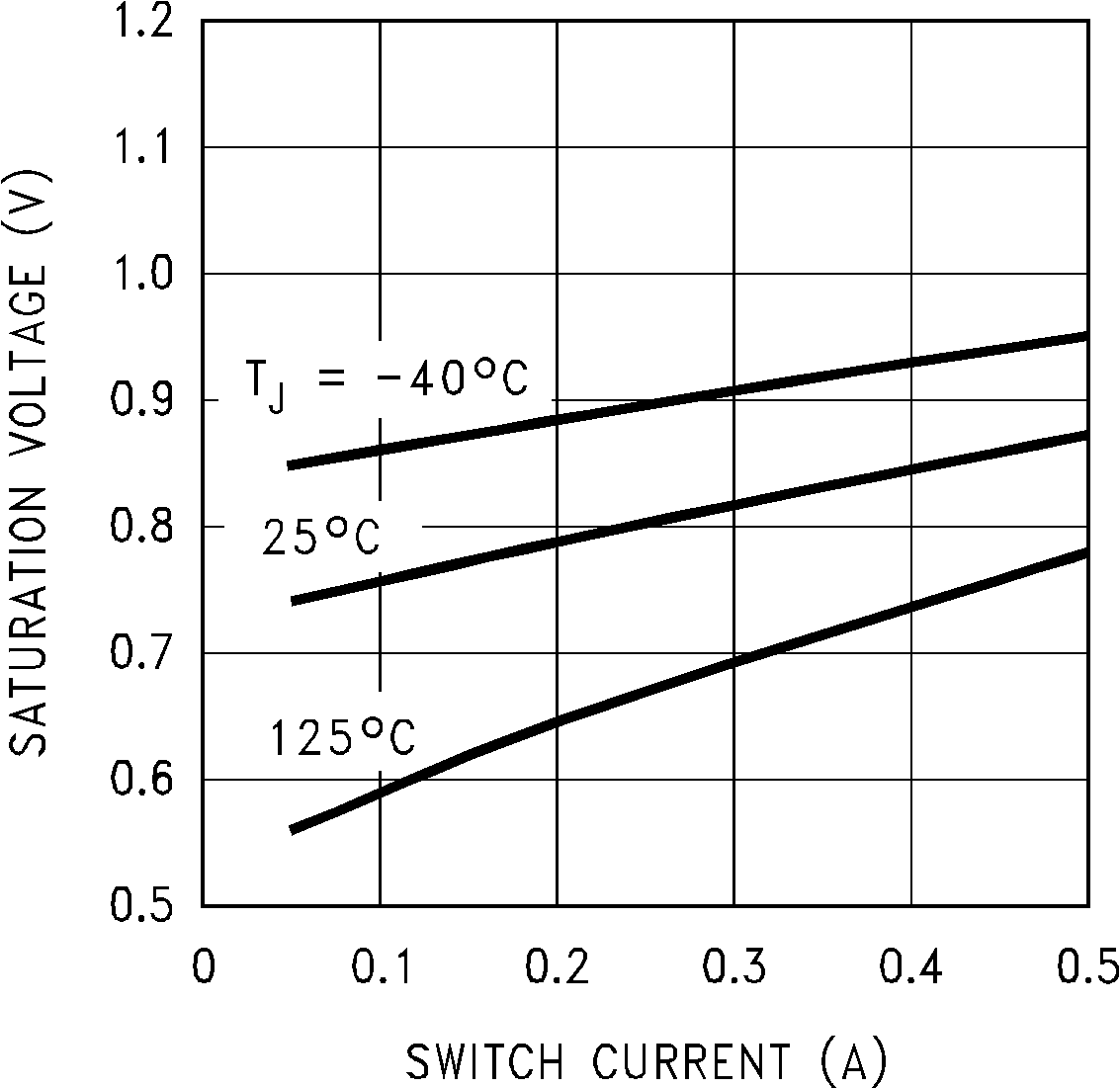 Figure 4. Switch Saturation Voltage
Figure 4. Switch Saturation Voltage
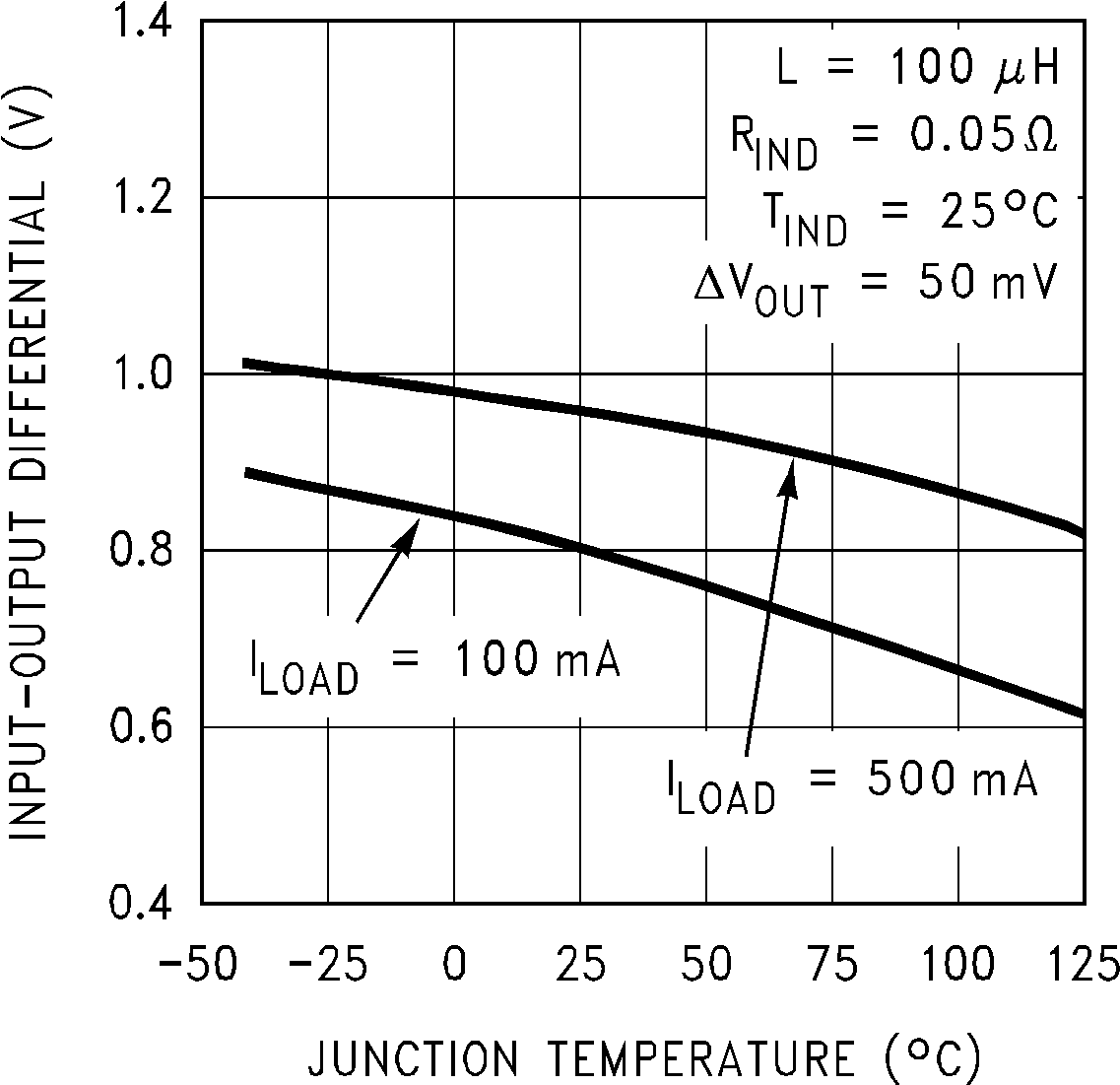 Figure 6. Dropout Voltage
Figure 6. Dropout Voltage
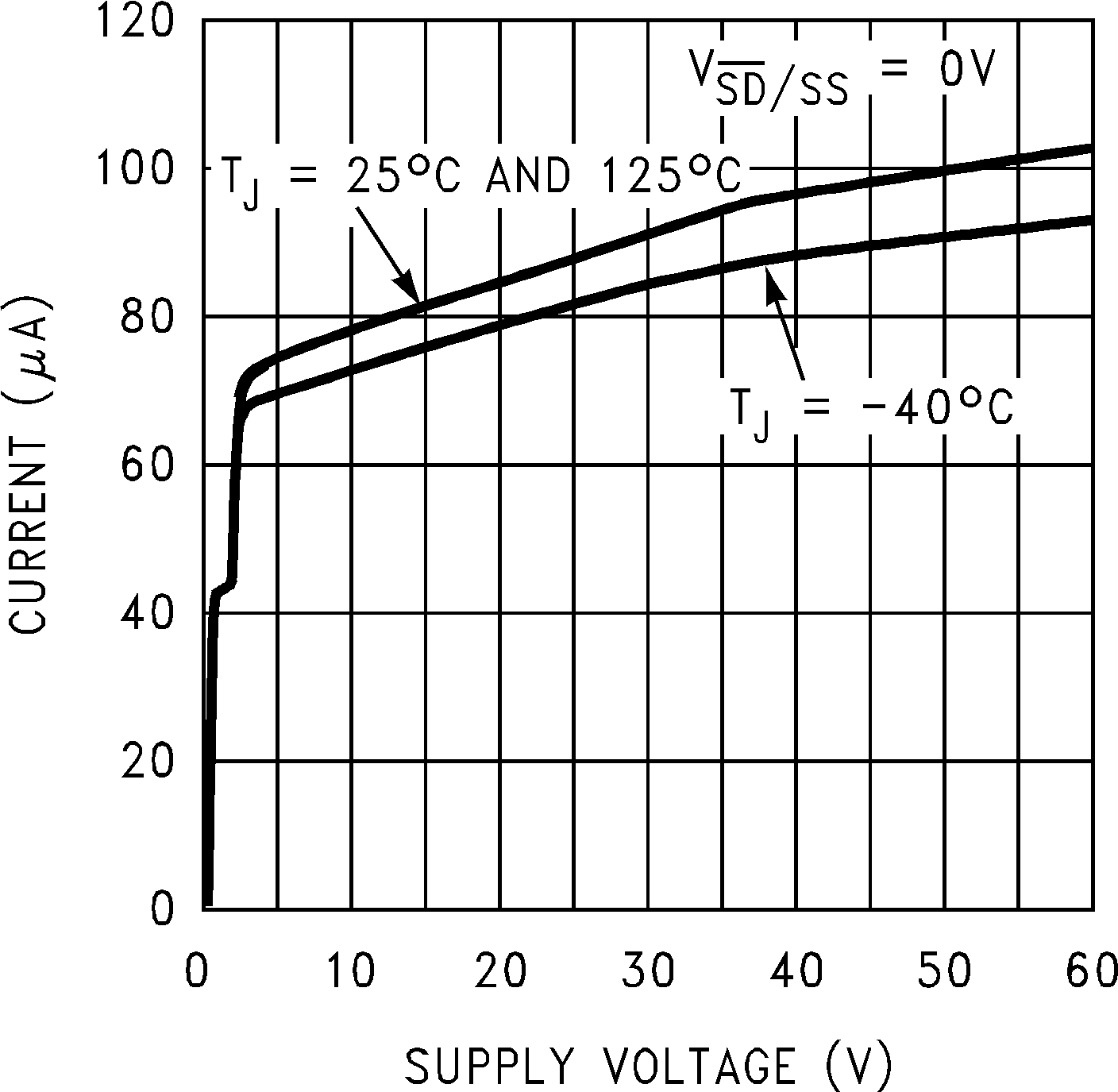 Figure 8. Standby Quiescent Current
Figure 8. Standby Quiescent Current
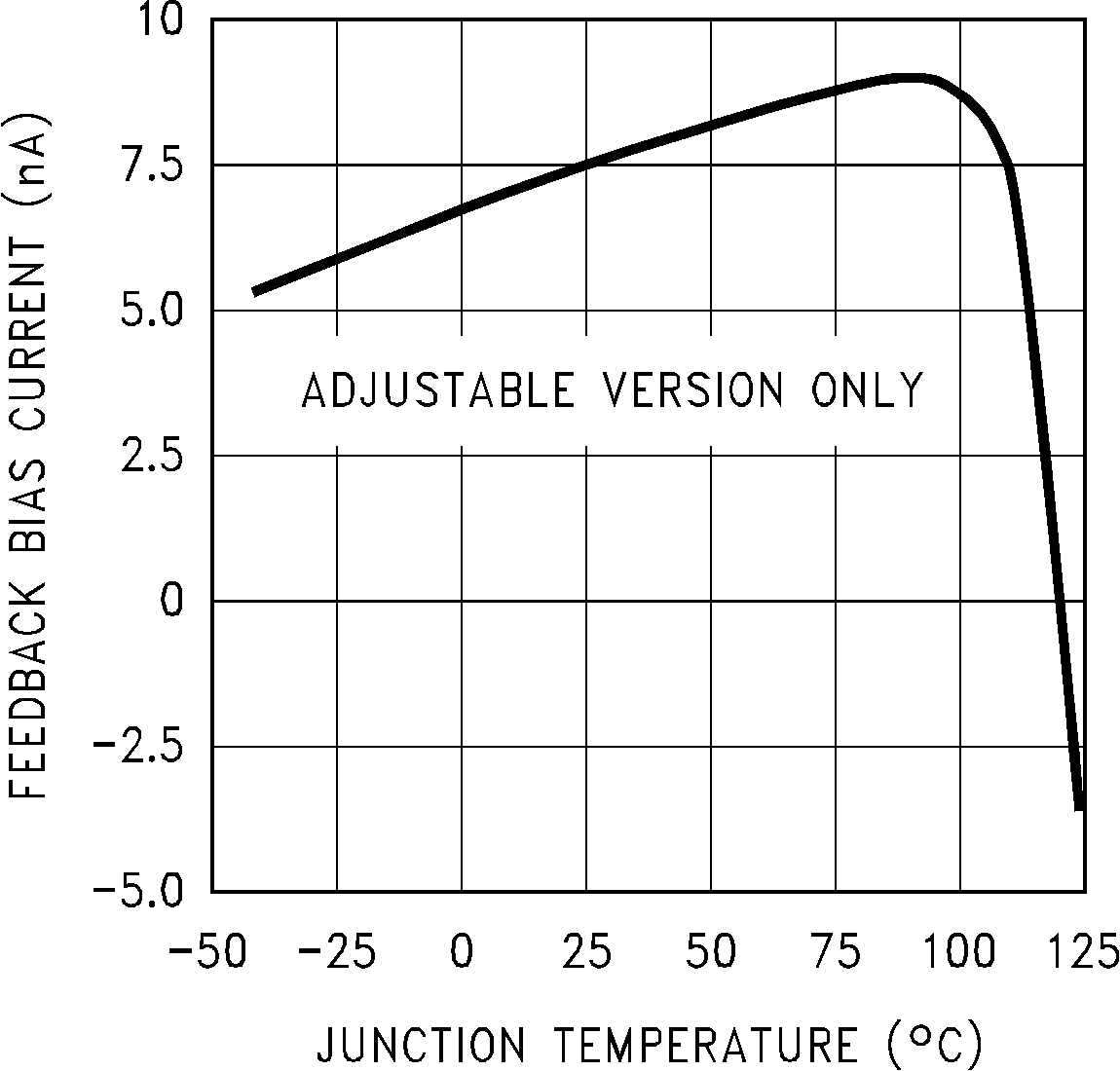 Figure 10. Feedback Pin Bias Current
Figure 10. Feedback Pin Bias Current
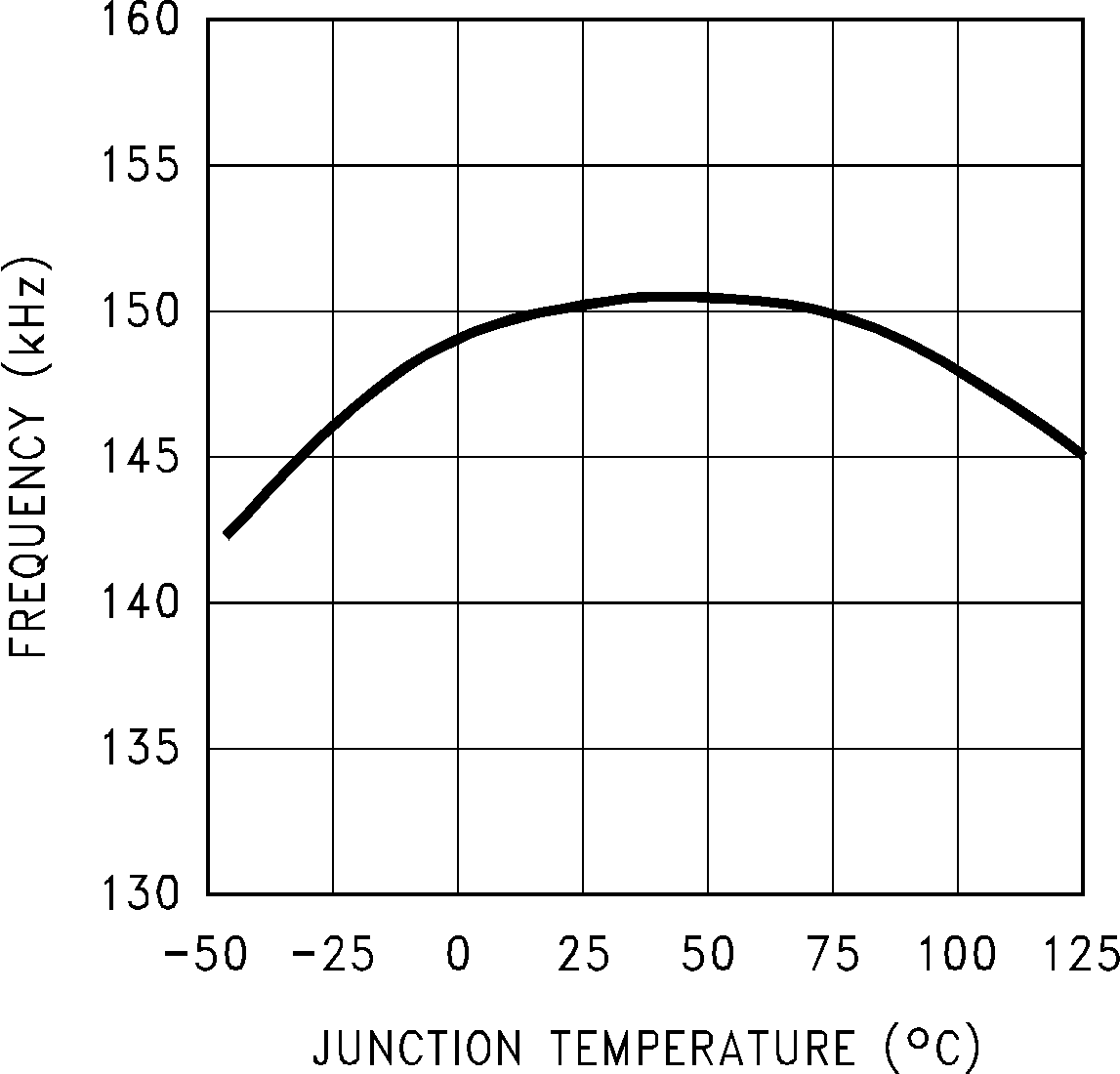 Figure 12. Switching Frequency
Figure 12. Switching Frequency
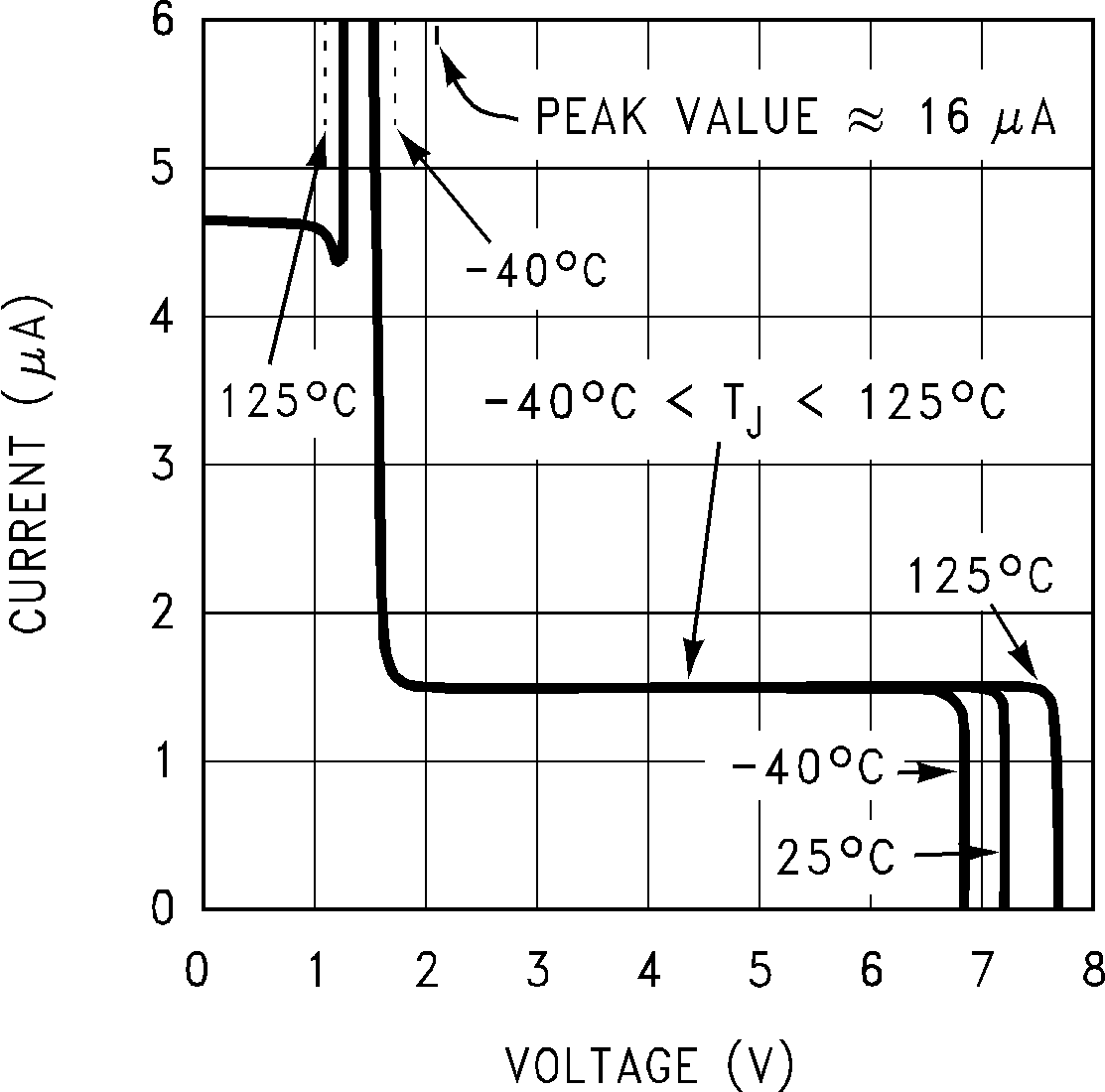 Figure 14. Shutdown/Soft-Start Current
Figure 14. Shutdown/Soft-Start Current
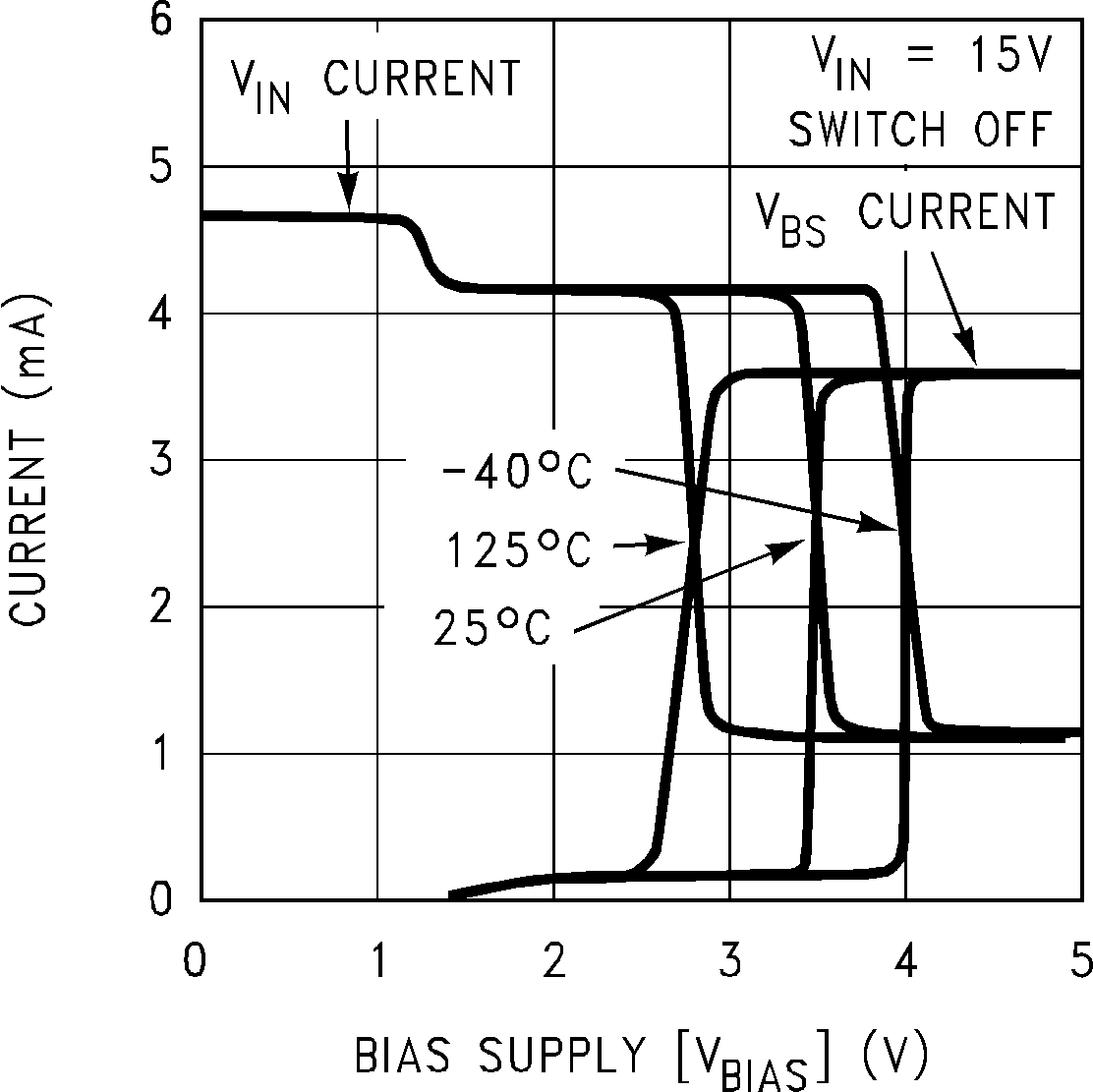 Figure 16. VIN and VBS Current vs VBS and Temperature
Figure 16. VIN and VBS Current vs VBS and Temperature
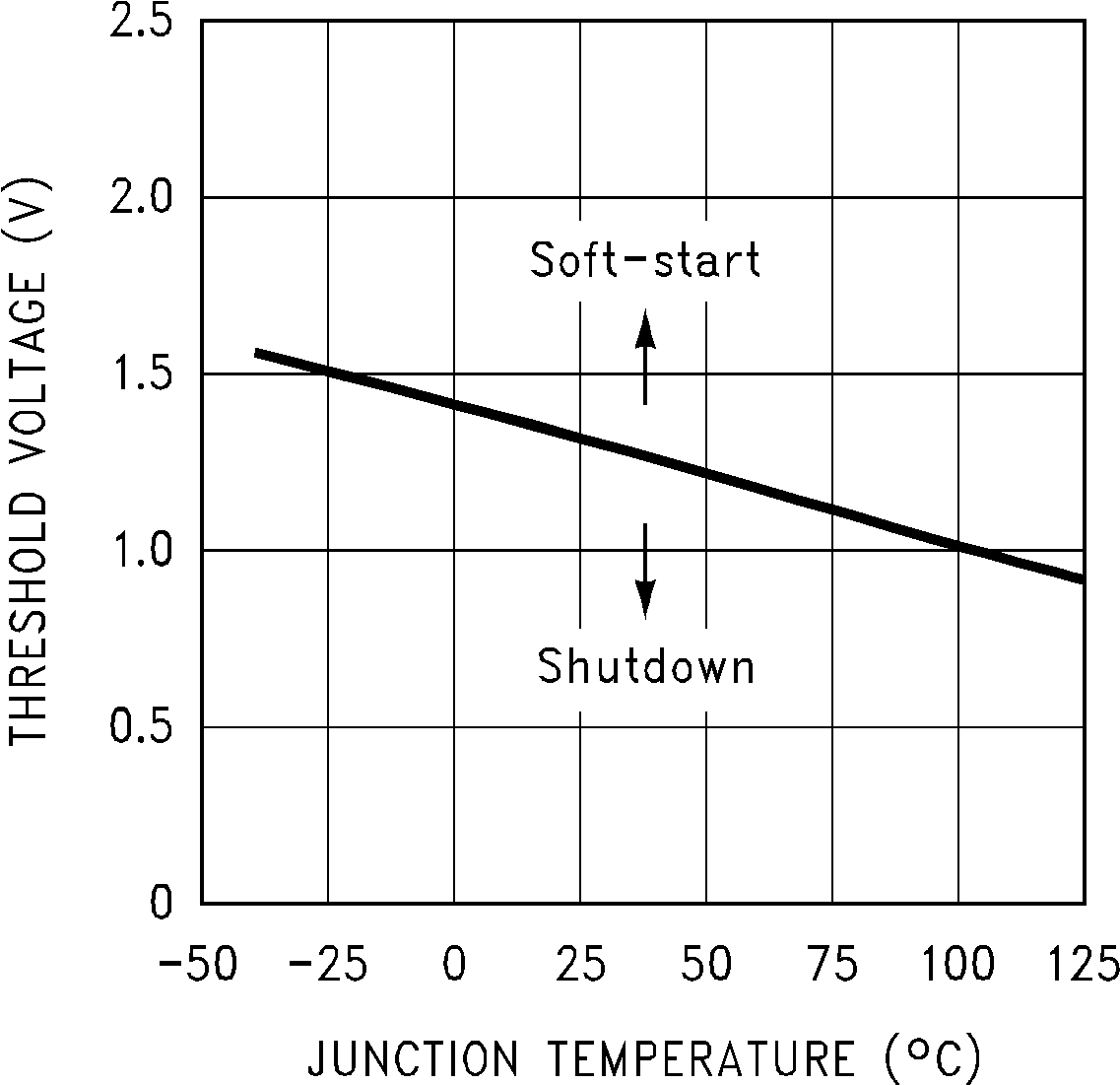 Figure 18. Shutdown/Soft-Start Threshold Voltage
Figure 18. Shutdown/Soft-Start Threshold Voltage